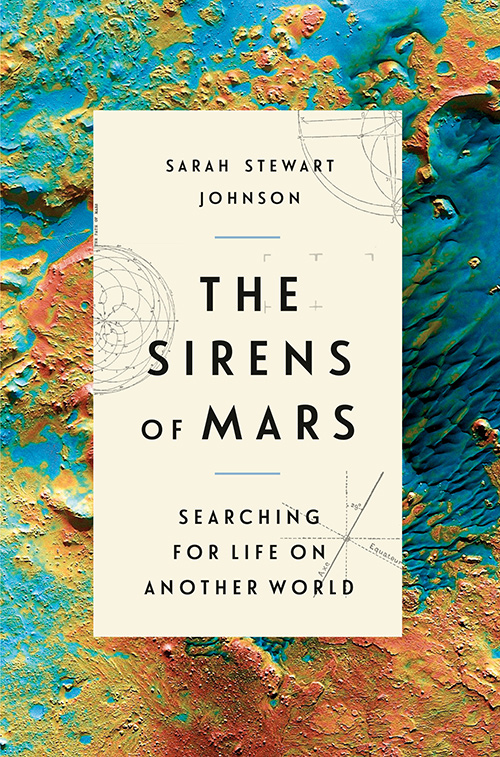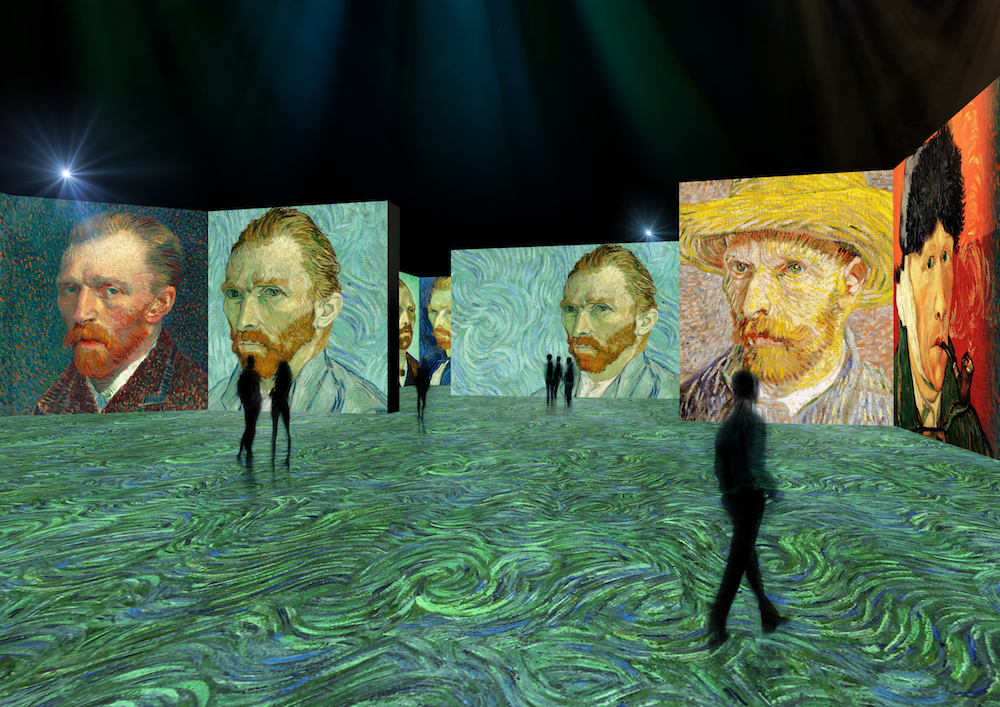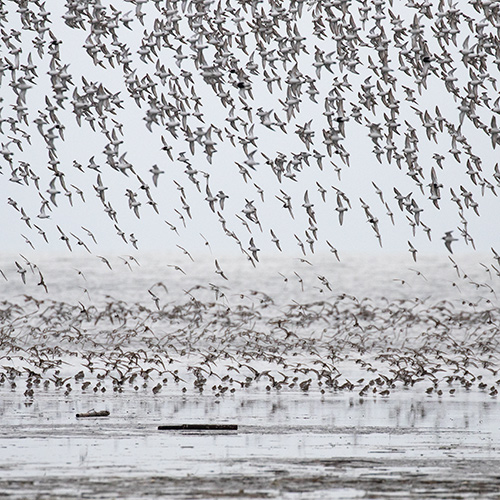Brush away the winter clouds for look at GPS-enabled blackbirds, a landing on Mars, and a high-tech starry night that Vincent Van Gogh could never have imagined.
They're among the offerings designed to make sure you continue to enjoy what you,ve come to value from Smithsonian Associates: programs and experiences that are entertaining, informative, eclectic, and insightful.
Mars in Focus

Think of it as a red carpet show for a Red Planet landing. Scientists John Grant and Mariah Baker of the Smithsonian's National Air and Space Museum join educators from the museum for a live chat in advance of the touchdown of the rover Perseverance in Mars' Jerezo Crater on Thursday, February 18. The 1 p.m. ET session airs on NASA TV and the museum's Facebook page and website. Both of the scientists from the museum's Center for Earth and Planetary Studies are set to answer questions from viewers before the scheduled landing.
A Thursday, February 25 Smithsonian Associates Streaming program offers the perfect encore to the landing of Perseverance. Georgetown University planetary scientist Sarah Stewart Johnson draws on her new book The Sirens of Mars: Searching for Life on Another World to examine how humankind's long quest to understand the nature of the planet is one that also encompasses our struggle to fathom our place in the cosmos. "The book is about the search for life on Mars, but it's not just the science of it," she said in a recent Washingtonian magazine interview. "It's also about our human relationship with the planet and how Mars has this human history, even though no human has ever touched it. I do think that it's been our mirror."
Read the Article
Register for the Program
Britain's Schindler
 Memorial to Nicholas Winton in Prague's main railway station by sculptor Flor Kent (Photo: Ludek Kovár)
Memorial to Nicholas Winton in Prague's main railway station by sculptor Flor Kent (Photo: Ludek Kovár)
The watercolor illustrations in Peter SÃs's children's book Nicky & Vera document life during a vanished time in Europe with a charm and character designed to captivate its young readers. But the book's subtitle-A Quiet Hero of the Holocaust and the Children He Rescued-signals that he has a dramatic story to tell them. Nicky is Nicholas Winton, an English banker who rescued 669 children from Nazi-occupied Prague in 1939-one of whom was Vera Gissing. Winton, who died in 2015, kept his own story of heroism hidden throughout his life. A recent segment on NPR's Morning Edition discusses the book and the man responsible for saving so many young lives. Grown-ups can learn more about Nicholas Winton in a Smithsonian Associates Streaming program on Monday, March 22 as historian Ralph Nurnberger recounts the story of this ordinary but remarkable man who was knighted for his wartime efforts.
Read the Article
Register for the Program
A Black Creative Legacy
 Clockwise: Nikki Giovanni, author, activist, and poet (Elsa Dorfman); Harlem's Apollo Theater (Photo: Shahar Azran); Elaine "Jae" Jarrell, artist and member of AfriCOBRA, an African American artist collective in the 1960s
Clockwise: Nikki Giovanni, author, activist, and poet (Elsa Dorfman); Harlem's Apollo Theater (Photo: Shahar Azran); Elaine "Jae" Jarrell, artist and member of AfriCOBRA, an African American artist collective in the 1960s
The literature of Ntozake Shange and Nikki Giovanni, the art of Jean-Michel Basquiat, the films by Melvin Van Peebles, the politically conscious theatre of Amiri Baraka, and music created by Gil Scott Heron and groups like Sweet Honey in the Rock are linked by a common cultural thread. They're among the wide-ranging reflections of the Black Arts Movement (BAM). During the 1960s and 1970s it permeated rural and urban cities and towns in the United States, drawing on blues, jazz, Black folk culture, and Black idiomatic expressions as its foundation.
In a Smithsonian Associates Streaming seminar on Saturday, April 17, join Michele L. Simms-Burton, a scholar of African American and Africana studies, for a day that explores the Black aesthetics and Black pride that defined BAM and how the movement converged with and diverted from the political, economic, and social landscapes of the period. She explores a number of cultural producers working in areas that ranged from music to literature, art to Black-owned presses.
Black art history informed the work of the late scholar, curator, and artist David Driskell. Sixty of his exuberant paintings and richly detailed collages dating from the 1950s to the 2000s are featured in a retrospective now at Atlanta's High Museum of Art. Take a look at several in a Smithsonian magazine web post.
Read the Article
Register for the Program
A Van Gogh Showdown
 Rendering of Van Gogh light exhibition at The LUME Indianapolis. Courtesy Newfields, Indianapolis.
Rendering of Van Gogh light exhibition at The LUME Indianapolis. Courtesy Newfields, Indianapolis.
Trendy immersive light exhibitions-part gallery, part visual disco, and part selfie backdrop-are finding inspiration in the masters for high-tech, high-resolution "experiences." The king of the pixels at the moment is Vincent Van Gogh, whose works provide the glowing wallpaper for light exhibitions slated for New York, San Francisco, and Indianapolis in what Artnet News calls "a transcontinental battle of illuminated Van Goghs." Which city's night will be the starriest (and most Instagram-worthy)? Check out the tip sheet.
Read the Article
Creatures on the Move
 Shorebirds above the steel-plate mud of Dongling, north of Shanghai (Photo: Scott Weidensaul)
Shorebirds above the steel-plate mud of Dongling, north of Shanghai (Photo: Scott Weidensaul)
Did you know that thrushes avoid dehydration and extend their flight range by more than 2,000 miles by "drinking" from their own muscles and organs? Or that birds very likely orient themselves using Earth's magnetic field? In a Tuesday, March 30 Smithsonian Associates Streaming program, naturalist Scott Weidensaul discusses the latest revelations in migration science and the work of researchers, scientists, and bird lovers to preserve global migratory patterns in the face of climate change and other environmental challenges. He's joined in conversation by Jennifer Ackerman, author of The Bird Way, as they explore the science and sheer wonder of global bird migration.
Migratory patterns provide far more information for scientists than road (or flight) maps. Their analysis can hold insights into animal behavior, species protection, the path of infectious diseases, and perhaps even help predict ecological changes and natural disasters. The Icarus initiative enables researchers to track animals using an antenna on the International Space Station that uploads data from miniature GPS transmitters attached to small animals such as birds, bats, and turtles. A recent New York Times Magazine article offers an in-depth look at the initiative and its potential to create what's been termed an Internet of animals. And a fascinating video highlights the first scientific Icarus project in 2020, in which scientists tracked several thousand blackbirds and thrushes in Europe, Russia, and North America to find out why song bird numbers are plummeting worldwide.
Read the Article
Register for the Program
Icarus Initiative